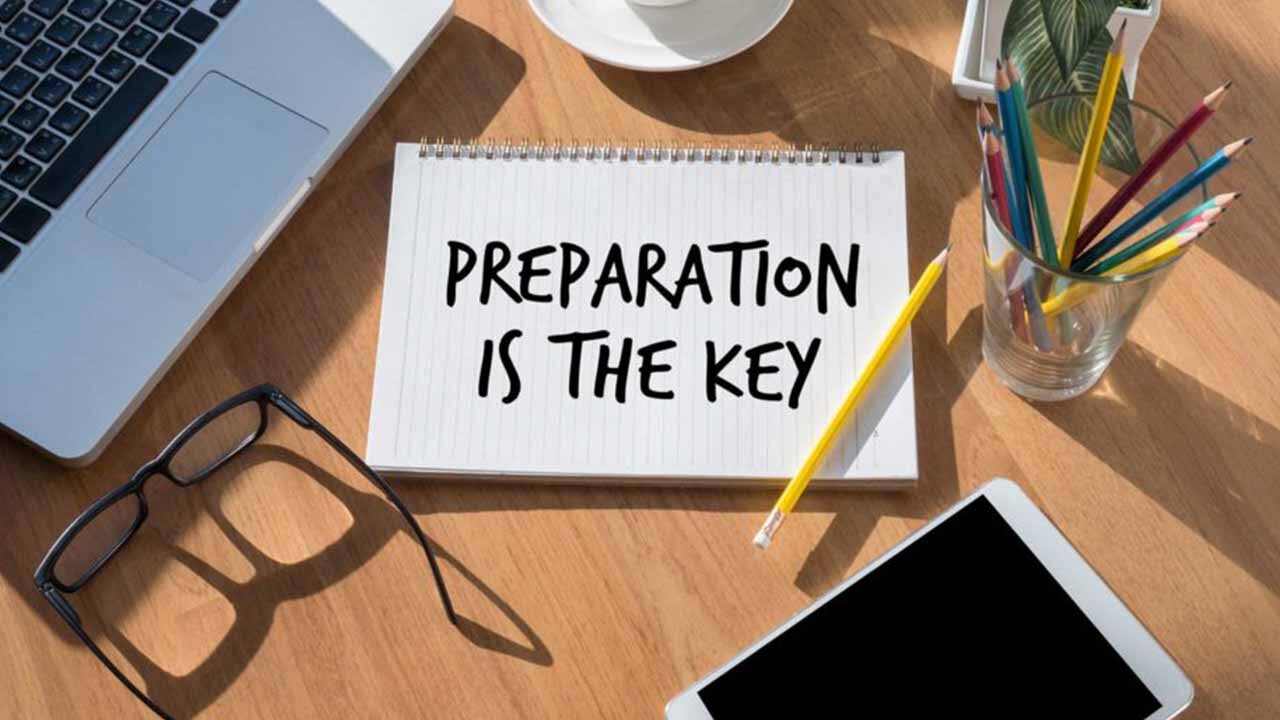Everyone should have a crisis plan and here’s how

By now everyone should know that every business, brand, and organization is bound to experience crisis. A crisis may not be happening within the four walls of your operations or directly calling you out for a customer service experience gone wrong, but we know that natural disasters, global health crises, and community unrest affect everyone.
That’s why it’s important to develop general protocols that can be followed when a crisis arises. These can be modified depending on the type of issue at hand and potentially adjusted throughout the duration of the crisis to meet the changing needs of your consumers and the communities you serve.
Think about it like this: you’re cruising along performing the normal day-to-day operations of your business when all of a sudden, without warning, disaster. Imagine you find yourself stranded at sea. If you don’t plan, you might be scrambling together a raft while you’re trying to keep your head above water. If you have a plan to address your most urgent needs—anything from a life vest to a safety boat—you’re in a better position to stay afloat and address your next challenge: getting to safety.
It’s a no-brainer. Having crisis response plans and socializing it with your team pays off. It sets you up to be in a better position to weather the storm so you can focus on how to respond to your needs and the needs of your business, your employees, and your community.
Before we get into the protocols, here are some best practices to remember in any crisis.
Stay calm
It’s human nature to take things personally when it comes to your business, whether it’s a rumor putting your reputation in jeopardy or an economic crisis that could put your business at risk. Before you do anything, take a deep breath. If you have outside counsel, engage them to get an unbiased opinion. Reacting emotionally can lead to errors, so it’s best to take your feelings and emotions out of the equation and focus on the facts.
Identify how the crisis could affect your business, if at all
As you hear about things happening around you, consider the potential impact or intersection with your business. Will your supply chain be affected? Could your staff’s safety be at risk? It’s important to take a holistic view of how an evolving situation could not only impact you but also your operations and the people you count on.
Act quickly but not hastily
Time is always of the essence—that’s why having a plan to execute is crucial. Instead of spending time deciding who’s in charge, you could be investigating or evaluating the situation and making plans for your response. It’s important to act quickly, but don’t rush to respond before you’ve fully evaluated the situation. This is particularly important if there are rumors swirling around or there’s a need for an investigation. If the facts will take longer to gather than a few hours, you may want to put out a holding statement while you continue to uncover them. If no one is pressuring you for a response yet, take time to gather feedback internally before moving forward. Again, don’t let your emotions cloud your judgment and lead to a rushed statement. If you don’t have all of the facts, you may misspeak and that could damage your brand’s reputation.
Message is important but tone is everything
It’s important that your message and tone reflect the situation. You may be planning a response for several platforms, including a spoken media interview, a written social media post, or a letter to your board. You can typically express tone best by speaking, but not everyone can show empathy or emotion in their facial expressions. If your spokesperson has a habit of smiling or laughing when things get uncomfortable, your entire message will fall flat. Invest in some media training or select a different spokesperson for more serious interviews. It’s more difficult but not impossible to reflect tone in written statements and responses. Thoughtfully craft your message. If your brand has a positive and playful tone on social media, remind your customers that you’re here to provide the fun content they’re used to while acknowledging the current situation.
If your statement has been edited by so many lawyers that it doesn’t take accountability for the situation, go back to the drawing board and try again. If your company is issuing an apology that doesn’t include the words “I’m sorry,” you’re in trouble. You may remember the apology that former United Airlines CEO Oscar Muñoz issued in response to the 2017 incident involving the forced removal of a passenger. It was completely tone-deaf and lacked empathy. There was no accountability, and while the words “I’m sorry” did make it into the statement, they did not seem even a little bit sincere. He may as well have said “no comment.”
Read the room
Pay attention to what is going on and make sure you’re taking that into consideration. If there’s a hurricane, and your community is rebuilding, you don’t need to go on TV in a suit and tie. Your family and business is also rebuilding. Wear a button down with the sleeves rolled up instead. If there’s a global health pandemic and you’re a restaurant, you don’t need to be giving medical advice. That’s not what people are coming to you for. They want to know if you’re open, what you’re doing to follow CDC guidelines, and if you’re offering delivery or curbside pickup. Tragic and life-changing events like the Las Vegas shooting in 2017 or the deadly wildfires in California in 2018 reach further than the families and businesses that were directly affected. When the entire country is in mourning, you should read the room (and pause your unrelated external communications efforts).
Identify who you need to communicate with and how
As soon as a crisis is looming, loop in the head of every department to ensure that all of your external communications are paused until you have a game plan. Do you have an ad campaign running? It should probably go on pause. Do you have funders that need to know what’s going on? Start drafting a newsletter to update them. Are you a customer-facing business that needs to communicate that you’re closed? Make a post on social media. Be sure to keep messaging and tone top of mind as you’re communicating to various audiences.
We saw advertising campaigns go on hold and shift to messages of togetherness at the beginning of COVID. When Hurricane Harvey hit Houston in 2017, we saw event organizers in Central Texas put their own agendas on hold. The crisis didn’t directly affect them, but a historic tropical storm was barreling towards the coast and it didn’t feel right to continue promotional social media posts and paid campaigns in the midst of emergency messages. They read the room. Life didn’t go on pause for Austinites, but putting external communications on pause allowed organizations to evaluate the situation and determine if they needed to postpone or cancel specific events, and potentially redirect resources towards fellow Texans.
How to set crisis communication protocols
If something goes wrong, how will your business handle it? Identifying tactics to handle a crisis in various stages now, will allow you to focus on the actions your business needs to take when a crisis arises. Working through these in advance will allow you to focus on your response more quickly.
Who will lead the charge?
Who at your company will lead the crisis response efforts? Depending on the structure of your team and the frequency with which you’re faced with crises, it may be an individual or a team. Brands like HEB who have complex responses to natural disasters and health crises have an entire team of full-time employees and a dedicated Facebook and Twitter handle for Emergency Preparedness. If you decide on a team, think about including individuals from different departments and define roles for each person. It’s helpful for all employees to know who this person or team is, but especially employees who are monitoring social media, overseeing customer service requests, and receiving media inquiries, so they can quickly escalate potential crises as they arise.
Identify a chain of command
Create a “phone tree” of sorts to identify who should be looped into the conversation and at what stage during the crisis. For example, if an angry customer is vocal on social media, a small team can work to resolve the issue, and you may already have protocols and responses in place for this very scenario due to your planning. If a tornado is heading your way, your phone tree may become the entire staff. The goal is to work calmly and quickly, and having a leader who can loop in necessary parties as they are needed will ensure focus and efficiency.
Carefully identify spokespeople
Whether you need someone to speak on behalf of your brand to the media or on a Facebook live, pick your spokesperson carefully. Think about someone who speaks eloquently, who feels comfortable in front of a camera, and can do well under pressure. Remember, the message is important, but tone is everything. Can your spokespeople deliver the tone you need to convey? The same employee who delivers fun, upbeat promotional videos may not be a fit for a somber message.
Measure, tweak, repeat
When creating crisis response protocols, think about a couple of crises that could happen to your business and make plans for how you would react. Here are some examples to get you started:
-
A situation that affects your specific business such as a customer service call that goes bad or a rumor about employee misconduct. What steps would you take to investigate the situation? Who from your team would take the lead? What kind of messaging would you develop and who would it be attributed to?
-
A natural disaster is happening in your area. How would it affect you if it hit your building or if it hit your community? Would you face supply chain issues? How would you handle staff safety?
-
Think back to the beginning of COVID and replay the steps you took to see if you would do anything differently.
Reevaluate your plans after you experience a crisis to see how they performed. Were there any lessons learned that could improve your plan and action next time? As the media and social media landscape continues to evolve, make sure your plan does too.
Julia Davis
Julia Davis is a public relations and marketing strategist who thrives in leading collaborative environments that produce out-the-box communications solutions.
More Blog Posts

Once upon a time, PR meant faxing a press release and hoping someone, somewhere, had paper in their machine. All...

Employee Appreciation Day, recognized on the first Friday in March, will be celebrated this year on March 7. It is...

1. The Power of Sustained Impression (Or: Stop Passing Out at First Dates) Let me tell you about a date...

We’re living in the age of data. Every swipe, click, and “add to cart” generates a treasure trove of information....




